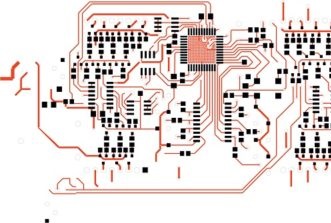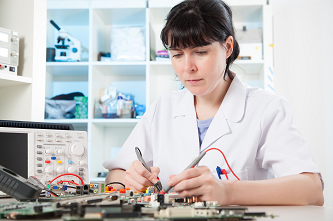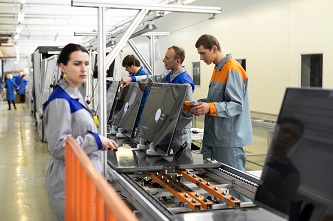This website uses cookies so that we can provide you with the best user experience possible. Cookie information is stored in your browser and performs functions such as recognising you when you return to our website and helping our team to understand which sections of the website you find most interesting and useful.
Efficient In-Memory AI Boosts Vision Applications
Analog Devices recently showcased a groundbreaking vision AI application utilizing its MAX78000 microcontroller, equipped with a custom Convolutional Neural Network Accelerator featuring a compute-in-memory architecture. This innovative technology enables vision AI inferences with remarkable efficiency, consuming mere microjoules of energy and occupying minimal board space. The microcontroller is paired with a low-power camera boasting a resolution of 169 x 120 and operating at 4 frames per second. With a 50MHz clock speed, the MAX78000 houses 64 in-house developed cores and boasts an energy profile of 200uJ, allowing it to function on a coin cell battery at under 1mA.
Robotic applications are increasingly demanding higher levels of intelligence and performance, necessitating the integration of AI capabilities. Traditional cloud-based inference processes are not only costly but also suffer from high latency and energy consumption issues. To address these challenges, Analog Devices has introduced a neural network accelerator chip, enabling the shift of processing tasks to the edge – closer to the data collection point. This approach empowers robots to swiftly and accurately interpret data, enhancing their autonomy and self-sufficiency. By embedding AI directly into sensors, the reliance on cloud services is reduced, leading to lower latency, decreased costs, and improved data privacy. This advancement paves the way for a new era of battery-powered AI and embedded robotics applications.
The showcased camera module is seamlessly integrated with a Robotis OpenMANIPULATOR-X robotic arm, configured in an eye-in-hand setup. This configuration enables the robotic arm to detect and track visually tagged objects, dynamically readjusting its position in response to changes in the environment. Leveraging local image processing capabilities, the system exhibits embedded intelligence and real-time responsiveness. Additionally, with micro-ROS support for custom applications, users can further tailor the system to meet specific requirements.
Training the AI models for this application is facilitated through PyTorch, a popular machine learning framework. A custom tool is utilized to convert the trained models into C code, which is then flashed onto the MAX78000 microcontroller. This seamless integration of AI training and deployment streamlines the development process, ensuring efficient utilization of the hardware's capabilities.
In conclusion, Analog Devices' introduction of the MAX78000 microcontroller with its advanced vision AI application marks a significant milestone in the field of embedded robotics. By harnessing the power of AI at the edge, this technology enables robots to operate with enhanced intelligence, efficiency, and autonomy. With the potential to revolutionize various industries, from manufacturing to healthcare, the MAX78000 sets a new standard for battery-powered AI applications, driving innovation and progress in the realm of embedded systems.













